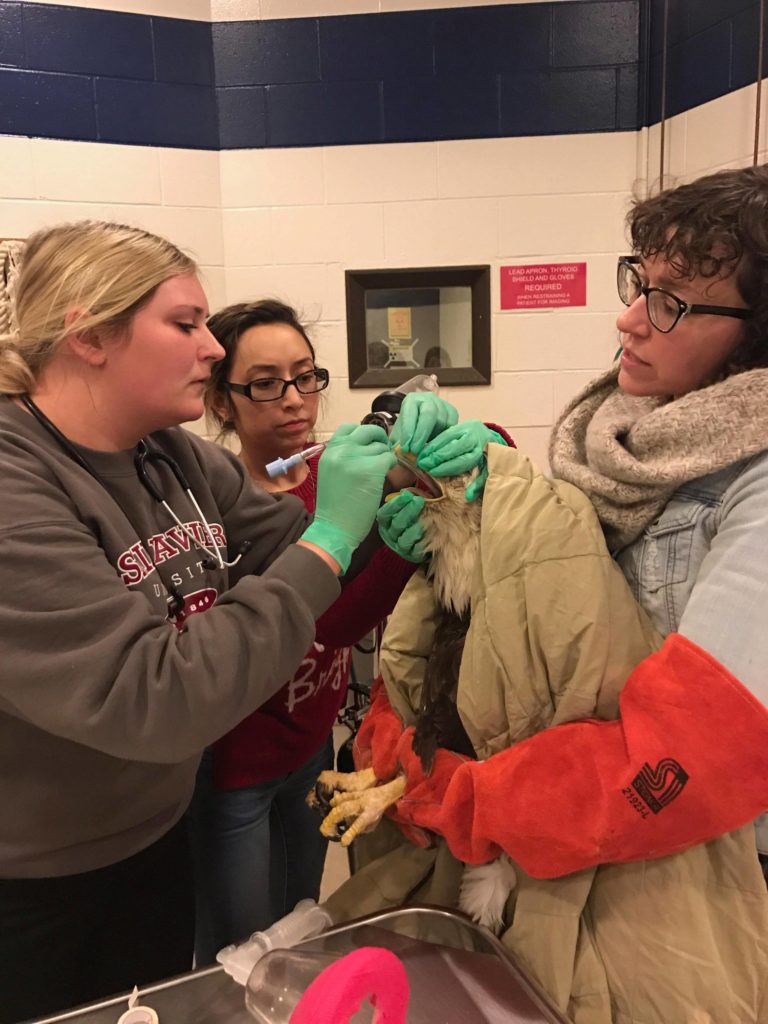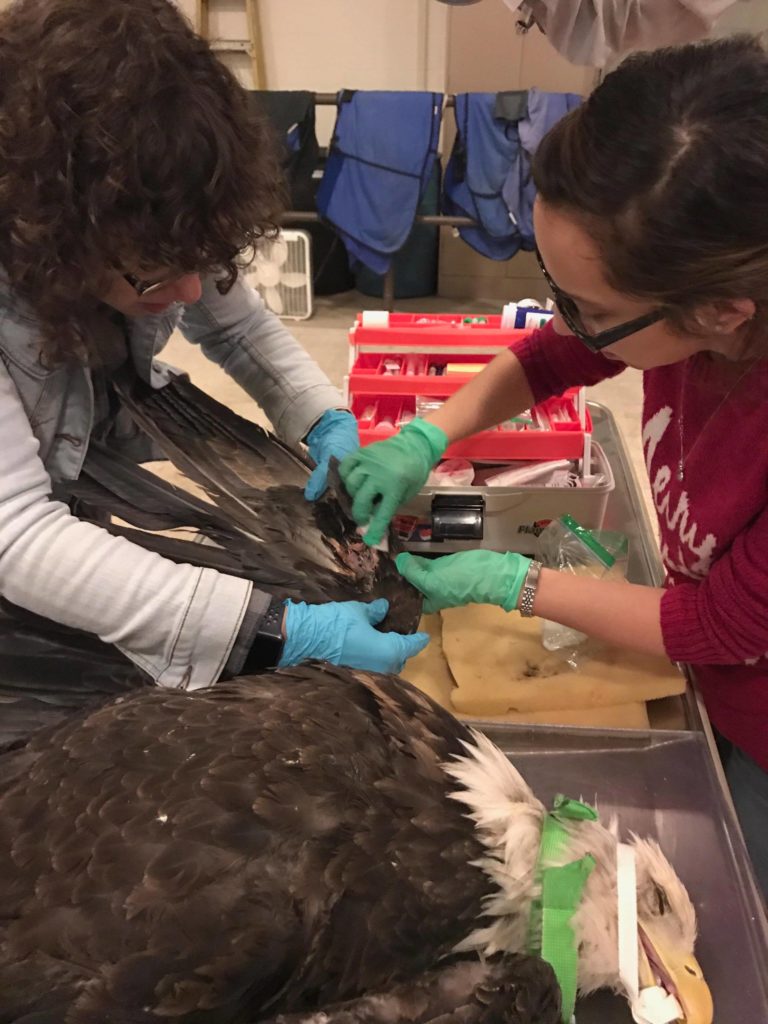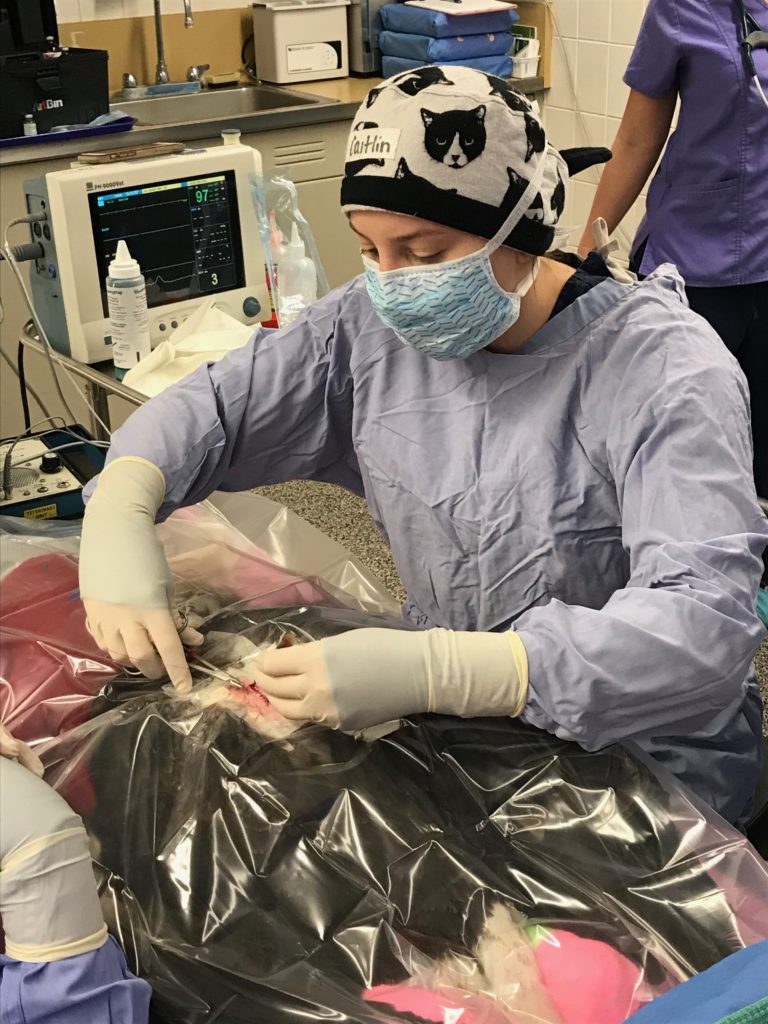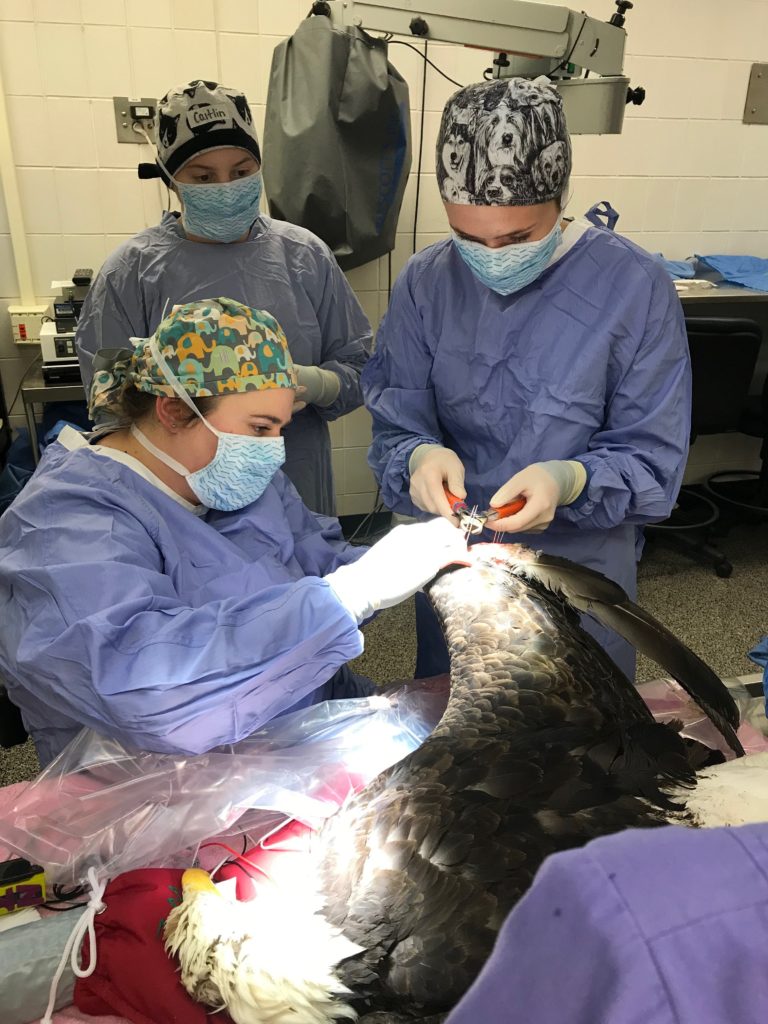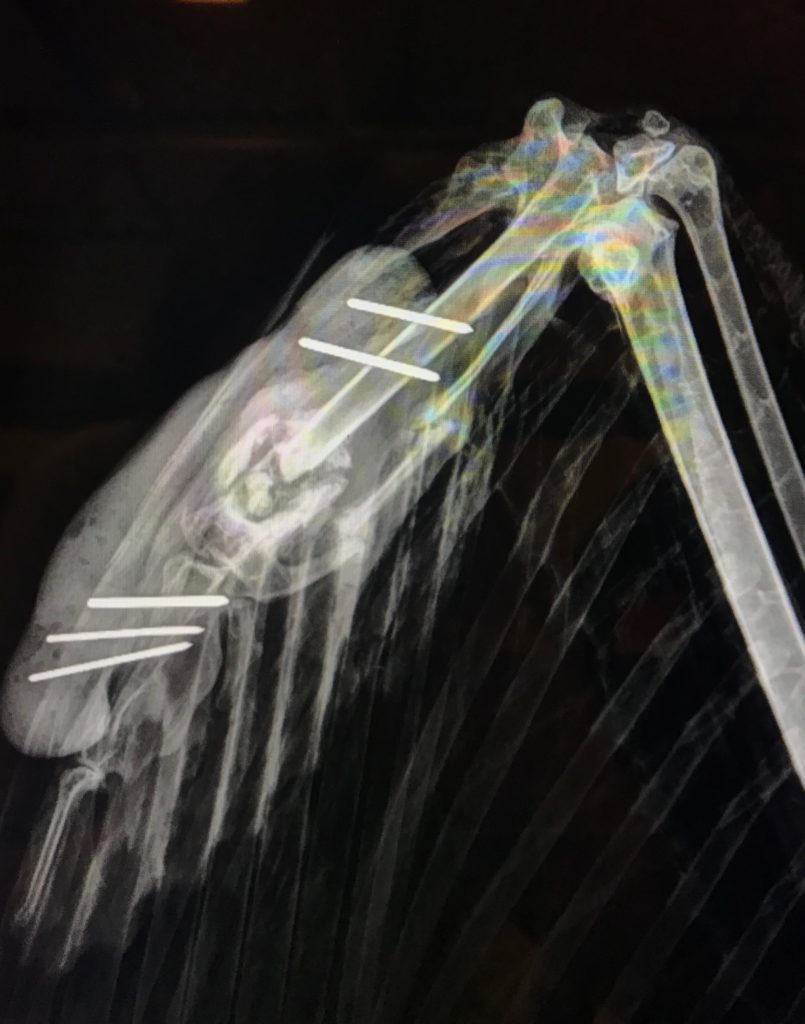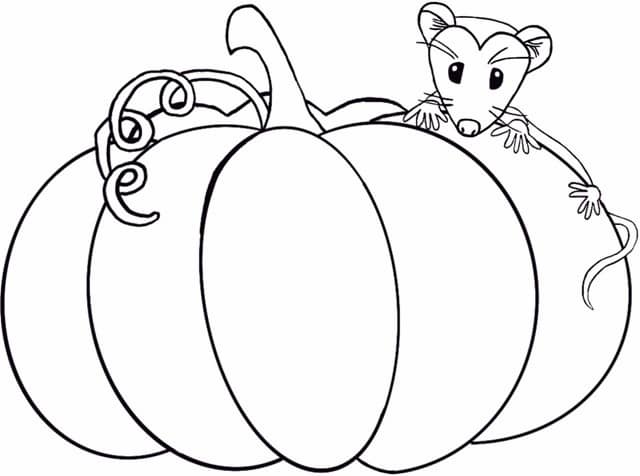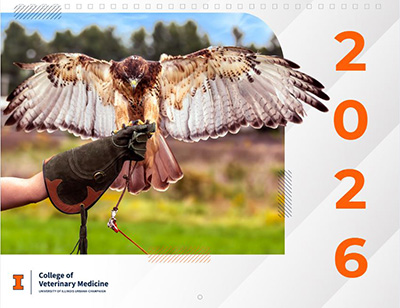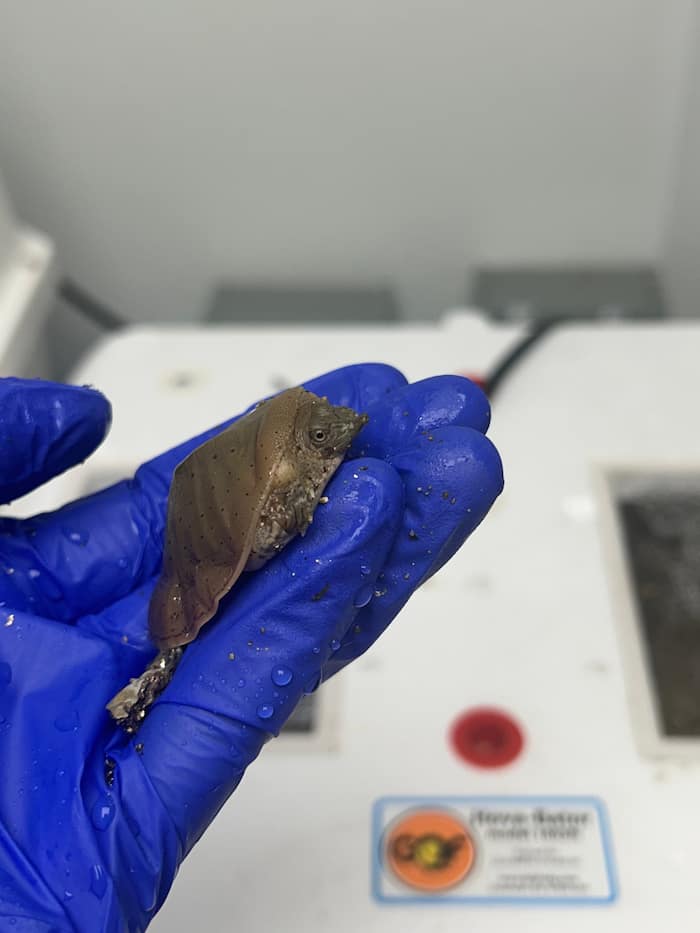You may recall a case from mid-November involving a female Bald Eagle with a metacarpal fracture- if not, you can read about the initial treatments here. A bony callus had formed appropriately over the well-aligned fracture site after cage rest with a wing wrap immobilization, and all else was well with the patient, so the team had elected to transfer this patient to the Illinois Raptor Center in order to give the patient more room to exercise and strengthen the wing before release. Unfortunately, even the best-laid plans may not always work out!
During transport, the eagle re-fractured the major metacarpal bone in an attempt to escape, resulting in a new open wound. We absolutely expect an otherwise healthy wild predator to behave this way in captivity, which is a huge part of the challenge when treating them. As it turns out, the callus had formed around necrotic (dead) bone tissue in the major metacarpal bone which was impossible to tell from the initial radiographs. It was fortunate that we were able to take her back in address the fracture as it may not have been able to get back enough strength to allow the bird to get back to full hunting capacity in the wild. The team initially took recheck radiographs to assess the extent of the new fractures, and a plan was made for surgical repair.
It was not until the site was accessed surgically that the necrotic debris could be accessed and removed. In place of this necrotic bone, fragments from the bird’s keel (‘breast’) bone were grafted into the metacarpal bone and pins were also surgically placed above and below the fracture site in order to better stabilize the fragile area.
Radiographs taken after the surgery indicated that the pins were in the proper positions to stabilize the fracture. In this radiograph, you can also see the antibiotic beads that are still in place to allow targeted release of medication to the area. The skin surrounding the open wound was not suitable to suture closed, so the team is managing the wound with medicinal honey and daily bandage changes. Manuka honey works as a natural antibiotic and will protect the area while the skin heals. This bald eagle actively attempts to evade capture for her daily bandage changes and is appropriately feisty, and we hope that with this treatment plan, a much more stable callus will form and we will continue to see progress with this patient!

